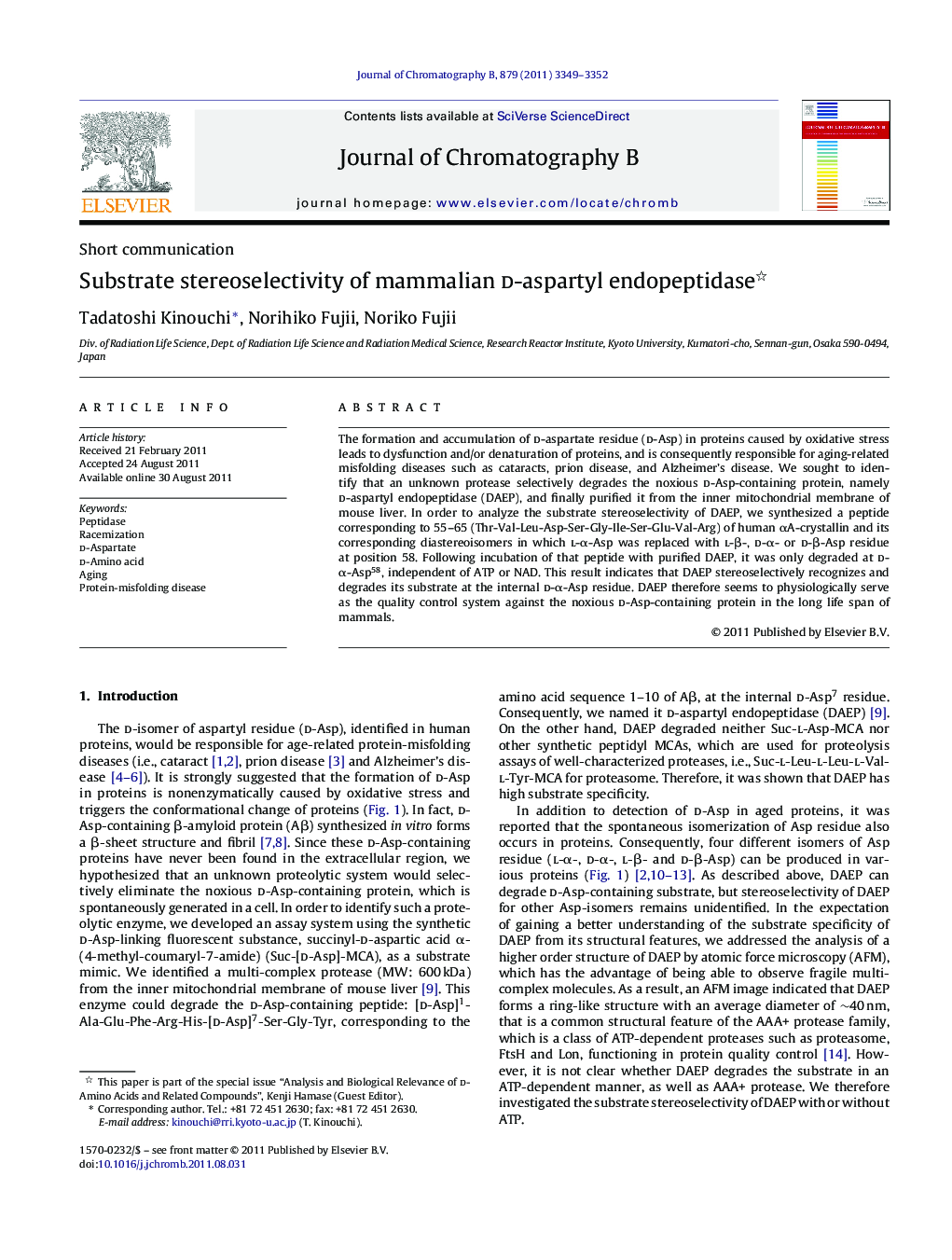| Article ID | Journal | Published Year | Pages | File Type |
|---|---|---|---|---|
| 1214259 | Journal of Chromatography B | 2011 | 4 Pages |
The formation and accumulation of d-aspartate residue (d-Asp) in proteins caused by oxidative stress leads to dysfunction and/or denaturation of proteins, and is consequently responsible for aging-related misfolding diseases such as cataracts, prion disease, and Alzheimer's disease. We sought to identify that an unknown protease selectively degrades the noxious d-Asp-containing protein, namely d-aspartyl endopeptidase (DAEP), and finally purified it from the inner mitochondrial membrane of mouse liver. In order to analyze the substrate stereoselectivity of DAEP, we synthesized a peptide corresponding to 55–65 (Thr-Val-Leu-Asp-Ser-Gly-Ile-Ser-Glu-Val-Arg) of human αA-crystallin and its corresponding diastereoisomers in which l-α-Asp was replaced with l-β-, d-α- or d-β-Asp residue at position 58. Following incubation of that peptide with purified DAEP, it was only degraded at d-α-Asp58, independent of ATP or NAD. This result indicates that DAEP stereoselectively recognizes and degrades its substrate at the internal d-α-Asp residue. DAEP therefore seems to physiologically serve as the quality control system against the noxious d-Asp-containing protein in the long life span of mammals.
